I’ve been meaning to share this project with you for ages, but life just kept getting in the way. Remember that gorgeous metallic Essex linen/cotton fabric I used for my sleeveless Lisette top based on Butterick B6464? Well, I finally got around to using up the leftover fabric for this dress. I finished it months ago, but somehow never found the time to post about it. This time, I modified the Liesl + Co. Bistro Dress pattern again. If you’ve followed my previous modifications to this pattern, you’ll know I love playing around with it to suit my style. You can check out my earlier tweaks here and here.
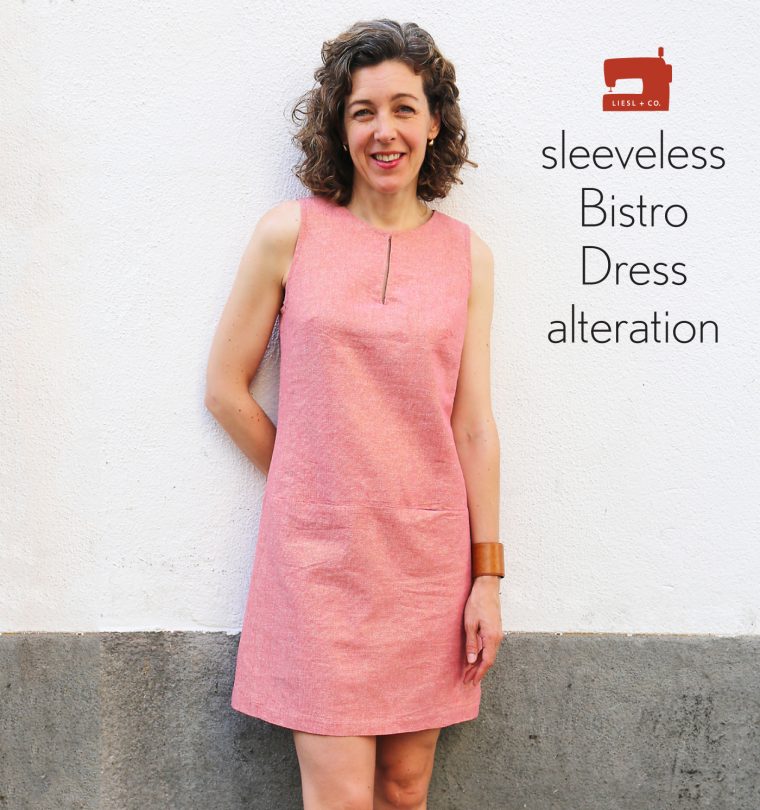
For this version, I decided to go sleeveless by removing the sleeves entirely and reshaping the armholes. I always sketch directly onto a muslin to ensure the fit is perfect and that I’m still able to cover my bra straps. After getting the desired shape, I used a French curve to redraw the armholes and applied the sleeveless bias-faced armhole technique from page 68 of the Building Block Dress book to finish them off. It’s such a seamless process, and from the outside, it looks as though the dress was made that way originally. I did shorten this dress quite a bit compared to my previous versions, and while it worked well for spring, I’ve started to feel like it’s a tad too short now. I might consider adding a couple of inches next time for a more versatile look.
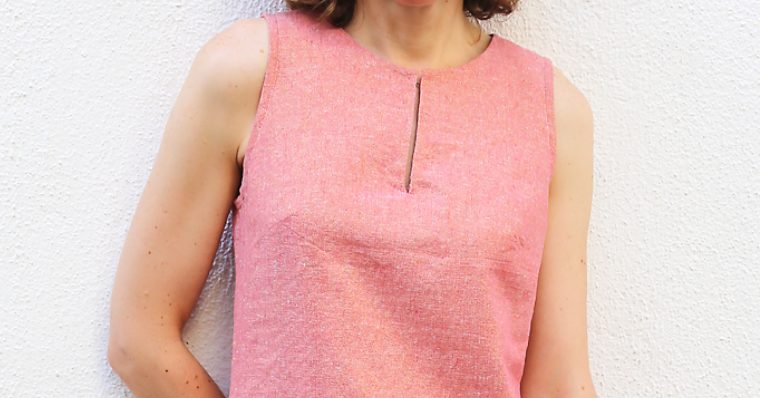
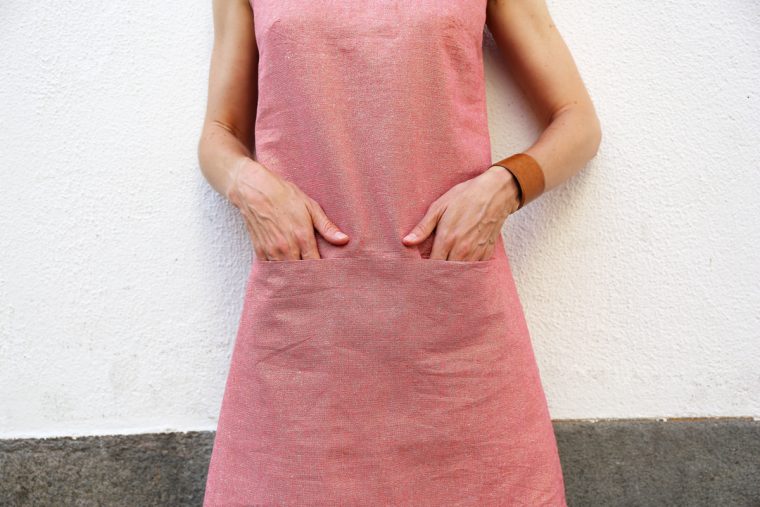
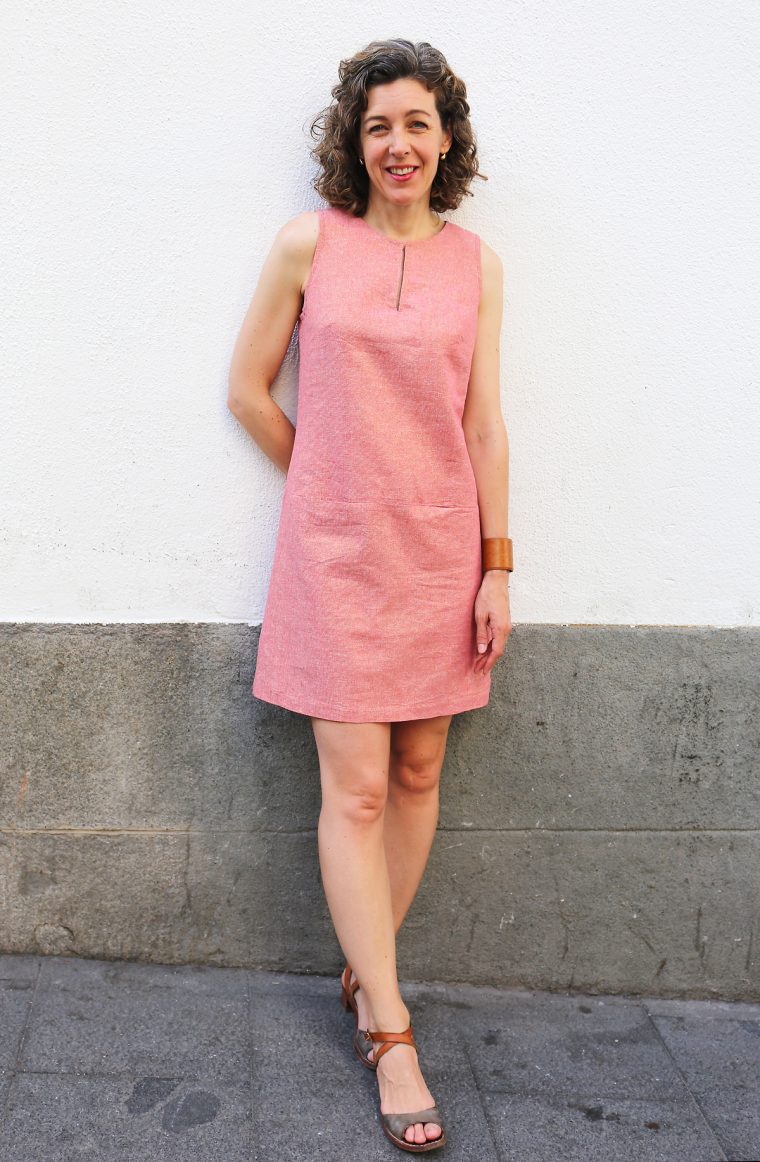
The gold metallic threads in this Essex yarn-dyed metallic from Robert Kaufman really shine in person, even if they don’t show up as vividly in these photos. The Dusty Rose colorway is simply stunning—my obsession began when I first spotted it at Quilt Market last fall. There are other beautiful colorways available, like the aqua blue named “Water,†which is equally captivating. This fabric is a blend of 50% linen, 40% cotton, and 10% lurex, so the metallic finish stays put even after washing. I adore it!
On a whim, I added a tiny hook and eye closure at the back of the neckline for a touch of versatility. It’s completely unnoticeable from the outside, but it gives me the option to adjust the fit depending on my mood or outfit. It’s a small detail, but I think it adds a nice touch to the overall design.
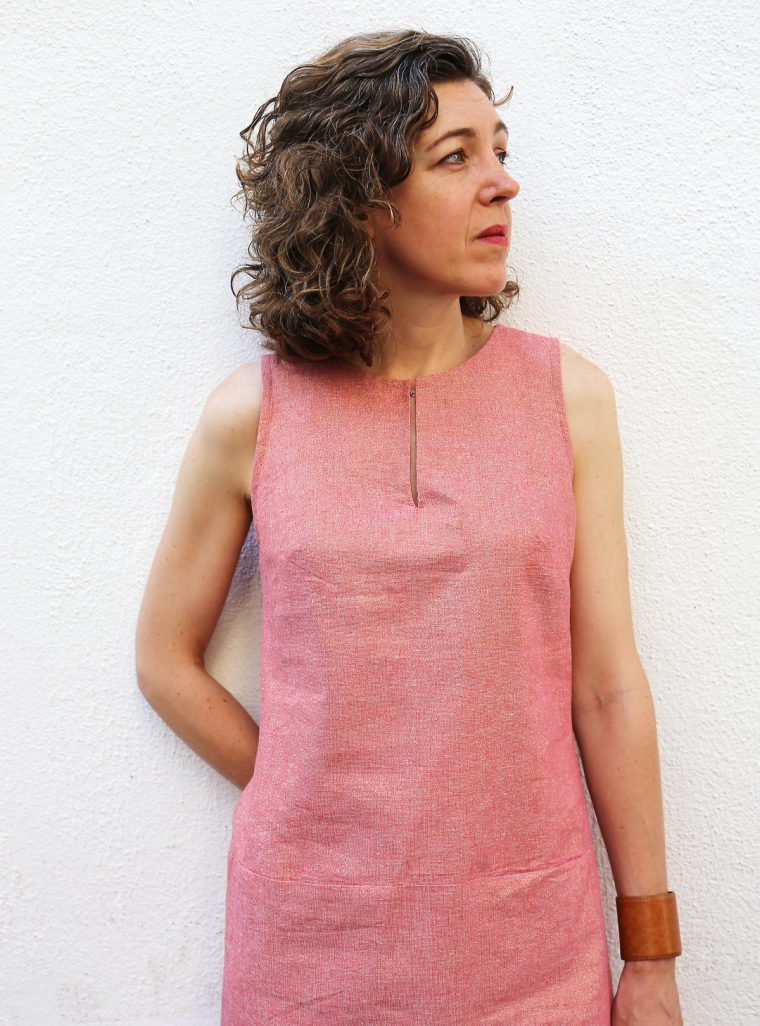
If you’re inspired to try this look yourself, you can grab your own copy of the Liesl + Co. Bistro Dress pattern in either print or digital form. My step-by-step guide for achieving this sleeveless style is available here. Don’t forget to tag your creations with #lieslandco and #bistrodress on Instagram so we can all admire your handiwork!
(adsbygoogle = window.adsbygoogle || []).push({}); Â
Stitch Bond Fusible Interlining
When the adhesive lining is bonded to the clothing fabric, it needs to have a certain pressing temperature, pressure and time. In addition, sometimes humidity also plays a role. When the temperature is too low, the viscose of the adhesive lining is not fully melted, so the adhesive force is not strong; while the temperature is too high, the viscose will melt too much, causing the viscose to penetrate into the surface of the fabric, and even hot paste the adhesive lining and fabrics. Therefore, before the formal ironing, you should first find a small piece of adhesive lining and fabric to do the ironing test, so as to grasp the temperature required for bonding.
Sewn nonwovens belong to the method of mechanical reinforcement of fiber net, which is made of nonwovens using warp knitting coil structure and mechanical reinforcement of fiber net. It is the use of stitched yarn (or hook to take the fiber bundle in the fiber net) through the role of the loop mechanism, the fiber net, yarn layer or non-textile material layer (such as foam, film, etc.) to strengthen, so that it becomes stitched nonwovens. In addition, it can also be woven into a coil structure in the base fabric (woven fabric or sewn nonwovens), so that it produces a loop effect and becomes a loop nonwovens. Sewn nonwovens are similar in appearance and feel to traditional textiles, and many sewn products are difficult to distinguish them from woven fabrics or knitted fabrics from the appearance alone, unlike other nonwovens that have a typical fiber network structure. Can be used to make suits, jackets, coats, fur coats and other outerwear clothing.
Stitch Bond Fusible Interlining,Fusible Interlining Fabric,Fusing Interlining Fabric,Microdot Interlining
TAIZHOU GAOXIN NONWOVENS CO.,LTD , https://www.cntz-nonwovens.com